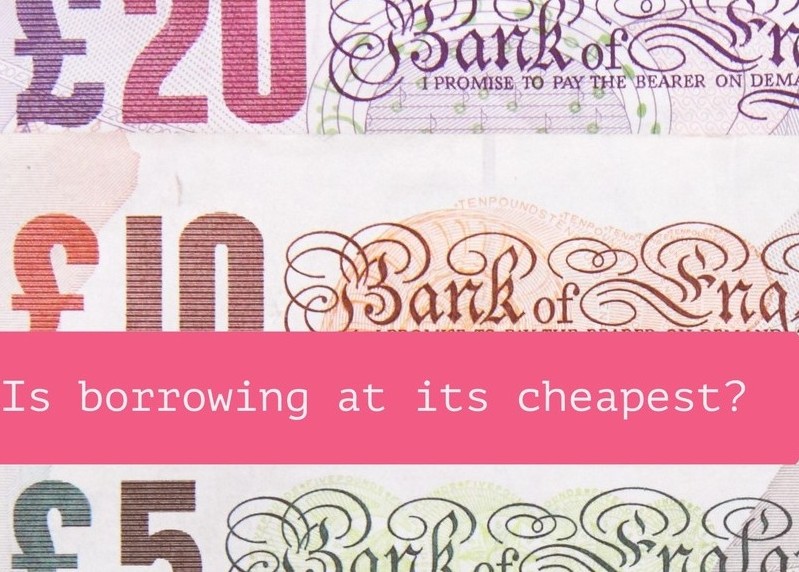
It is satisfying that local banks are contacting us to promote their mortgage products. We had got used to hearing nothing from them, or, in the case of NatWest, to having a waiting list for a mortgage appointment of up to five months. Now, we are back to the old days, of breaking bread together, encouraging the supply of available debt to those who need it or to those who don’t need it but will benefit from it.
With the UK base rate held at 0.25%, debt remains at historically low levels. NatWest Gibraltar is offering a 2 year fixed rate on a 60% loan to value mortgage at 2.55%. Gibraltar International Bank, Kleinwort Hambros and Jyske all have attractive retail mortgage propositions. In fact, for the first time for a few years, we sense that the mortgage market is Gibraltar is competitive which has to be good for the consumer.
So is it time to fill your boots with debt? Possibly yes.
The majority of economists expect the next movement in the bank rate to be up rather than down, barring any major economic shock. The current consensus view is leaning towards 2018 at the earliest but it is still very possible that rates will rise before the year is out and some bookmakers are offering pretty short odds of 5/1 that we will see an increase in the bank rate in 2017.
The Bank of England’s Monetary Policy Committee, which sets the bank rate each month, has indicated that it is keen to keep rates at current levels for the foreseeable future to support growth through the initial phase of the Brexit negotiations. Notwithstanding this strategy, there are grounds to suggest 2017 could mark the end of the current low interest rate era.
The mortgage market is quite buoyant in the UK. The Council for Mortgage Lending in the UK has shown that gross mortgage lending for 2016 was £246bn - 12% up against 2015’s total of £220bn and the highest annual gross lending since those hazy lending days of 2008.
So now may be the time for first time buyers and those wishing to trade up their property to enter the market with a new mortgage. But how about seasoned property investors? Debt can improve returns there too. Say, for example an investor has a property valued at £500,000 without any mortgage earning £30,000 rent ie a 6% yield. Take out a 4% interest buy to let loan at 60% loan to value and the equity investment is now £200,000 with a net return of £18,000 (£30,000 rent less £12,000 interest). That’s a 9% return on equity. Now that’s attractive.
The window of opportunity to secure a good low fixed rate mortgage deal will clearly not last forever and buyers and owners or investors looking to re-mortgage should monitor events closely over the coming year. There is a degree of comfort in the recent history of bank rate hikes which provides evidence that rate increases are typically gradual: since January 2000, there have been 12 rises in the bank rate – all of them by 25 basis points. Nonetheless, a steady drip of several small increases over a relatively short period of time could build into a significant cumulative effect.
With so many other factors at play, not least any possible Brexit fallout and the “Trump effect”, it is impossible to say with any degree of certainty which way rates will move.
For now, it might be wise to make an appointment with your friendly bank manager. He or she, is once again, keen to lend.
Contributed by Mike Nicholls
Recent articles
-
Chestertons’ website attracts a record number of visitors
January 2024 saw a new monthly record for the number of users visiting the …
-
Chestertons sponsors Pirates Cricket Team
Chestertons is thrilled to announce its continued sponsorship of the Pirates …
-
New record for Chestertons’ BIG Breakfast
The provisional sum raised from Friday's BIG Breakfast for GBC Open Day is …
